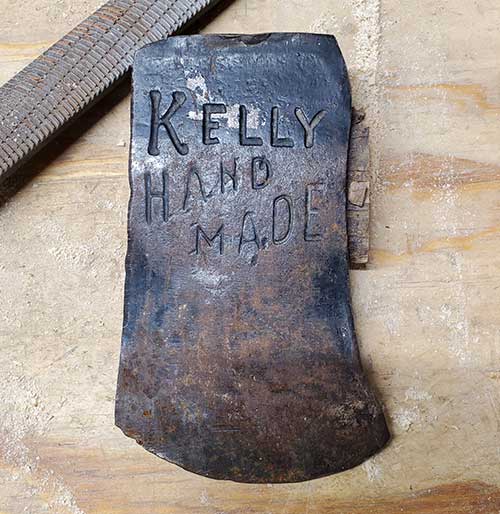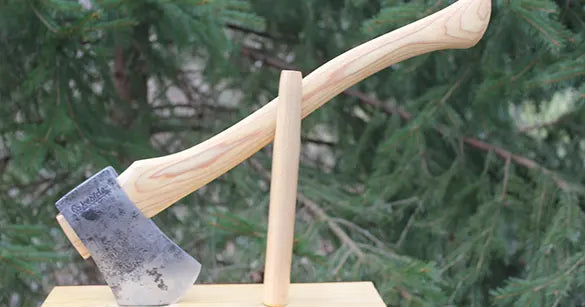We have seen all manner of axes come through our shop that people sought us to restore to useful life. Some could be. Others went right to the scrap pile. How do you tell the difference between an axe that is worth the time to bring back to life and one that can only be used as a door stop? Read on!
EXTRA WEDGES IN THE EYE
One tell-tale sign of potential problems with the eye of the axe is the number (and type) of wedges jammed into the handle. We have pulled out nails, screws and even cut off screwdrivers from the eyes of axes all used to desperately hold the axe head to the handle. Beware!
While using extra wedges can undoubtedly fix a loose axe head in an emergency, resorting to such extreme measures may indicate an unseen defect in the eye of the axe. Remove the wedges, punch out the handle and examine the eye to make sure that it is symmetrical and can still hold a handle.
Chips or Cracks In The Bit
A quick visual inspection of the axe head should reveal chips or cracks in the bit. Finding a crack in the axe head is fatal.
Chips of 1/16” – 1/8” can usually be repaired using a file and/or honing puck.
Mushrooming of the Eye
Mushrooming occurs when the pole of the axe is used as a hammer too often, resulting in extreme damage to the eye. Although the poll of the axe seems like a perfect hammer, excessive use can compromise the tool's safety.
If cracks are seen in the eye, there's no question — the axe should be retired. If there are no visible cracks around the eye and it is not distended so that a new handle can be hafted to it, then continue on. The mushrooming can be ground off the poll of the axe using a high speed grinder or a mill bastard file.
Remember that safety should always be a top priority, and one way to prioritize safety is by replacing a damaged axe rather than trying to continue using it.
Asymmetrical Bit

We often find axes which have been sharpened in one direction more than the other, i.e. the bit is asymmetrical. This is why when sharpening your axe make sure that you use the same number of passes from both directions.
Depending on how asymmetrical the bit is sometimes it can be saved. However, older axes were generally only hardened from the end of the bit up approximately an inch. If the bit is off by more than a inch to one direction, then the axe head’s next stop is the junk pile.
Additionally, excessive grinding can remove the hardened steel from the bit, rendering it beyond repair. To keep your axe in top condition, sharpen it properly and regularly — and remember, always sharpen from both sides to avoid uneven wear.
If you would like our advice on whether to restore your axe or not or would like us to restore it for you reach out to us about restoration services.
